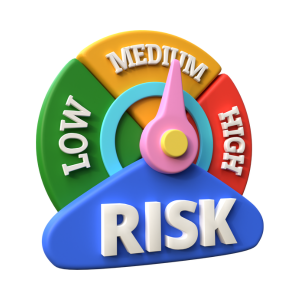 Keeping up to date on legal matters is often the last thing on the to-do list for most small business owners—unless, of course, we suddenly need a lawyer. That was exactly what sparked my interest was when I attended a Business Briefing hosted business attorney. He offered a brief but eye-opening overview of risk management, a topic that initially sounded far too corporate for the room full of small business owners.
Keeping up to date on legal matters is often the last thing on the to-do list for most small business owners—unless, of course, we suddenly need a lawyer. That was exactly what sparked my interest was when I attended a Business Briefing hosted business attorney. He offered a brief but eye-opening overview of risk management, a topic that initially sounded far too corporate for the room full of small business owners.
Naturally, we asked: How does risk management actually affect us? The answer: A lot more than we think.
Why Risk Management Matters for Small Business Owners
At its core, risk management is the process of identifying, assessing, and responding to potential risks that could negatively impact your business. While large corporations may have dedicated departments for this, small business owners often have to juggle this responsibility alongside everything else. Still, that doesn’t mean we can afford to ignore it.
The overview we received during the briefing touched on several critical areas every business owner should be aware of, including business structure, employee liability, financial oversight, and even marketing practices. Here’s a breakdown of how risk management applies in real, practical terms.
- Business Structure: The way your business is legally structured (sole proprietorship, LLC, corporation, etc.) can significantly impact your personal liability and the type and amount of insurance coverage you may need. Choosing the wrong structure—or failing to revisit it as your business grows—can expose you to unnecessary risk.
- Employee Liability: One of the most significant legal risks comes from employee-related issues. Courts have awarded some of the highest settlements in this area. Keeping accurate and up-to-date personnel records, following proper hiring practices, and enforcing consistent workplace policies can greatly reduce your exposure. Don’t overlook things like employee handbooks, clear job descriptions, and performance documentation.
- Business Practices: How you conduct day-to-day operations can either protect or expose your business. For instance:
- Do you use confidentiality or non-disclosure agreements to protect proprietary information?
- Are your contract renewals tracked and documented?
- Is your sensitive data secure, especially with devices like smartphones in the workplace?
Some companies even prohibit camera-enabled phones in certain areas to prevent data theft. These kinds of policies are simple but powerful tools for managing operational risk.
- Financial Oversight: This is an area where many horror stories begin. Too often, business owners hand off financial tasks—such as bill paying, check writing, collections, and credit card use—to a single trusted employee. Without oversight or internal checks and balances, it becomes far too easy for thousands of dollars to disappear unnoticed.
Even if you’re a solo entrepreneur, it’s essential to create systems that:
- Track cash flow and expenses,
- Require approvals for larger transactions,
- Regularly reconcile accounts, and
- Limit access to sensitive financial tools.
- Marketing & Intellectual Property: This is an often-overlooked area of risk. For example:
- Have you registered your business name and protected your logo or slogan?
- Are you using copyrighted materials properly in your advertising?
- Did you get permission or licenses for photos, music, or videos on your website or social media?
Neglecting these areas can lead to lawsuits, cease-and-desist orders, or costly rebranding. Marketing may not seem risky at first glance, but legally, it absolutely can be.
A Simple Risk Review Process: The good news is, you don’t need to be a legal expert to get started. Here’s a basic 3-step framework you can use:
- Identify Potential Risk Areas
Think about areas like business structure, employment, operations, finances, and marketing. Where might problems arise? - Analyze the Source of Risk
Ask: What exactly could go wrong? What’s the root cause? Who’s responsible? What’s the worst-case scenario? - Evaluate Your Options
Consider your next steps. Could you:- Avoid the risk entirely?
- Reduce the likelihood or impact?
- Transfer the risk (e.g., through insurance or contracts)?
- Or simply accept the risk, if it’s minimal and manageable?
And always remember: consult the right professionals—your attorney, insurance agent, or financial advisor. Your business is too important to leave to chance.
THE CHALLENGE: Take the first step and analyze a potential area of your business that might be at risk,

